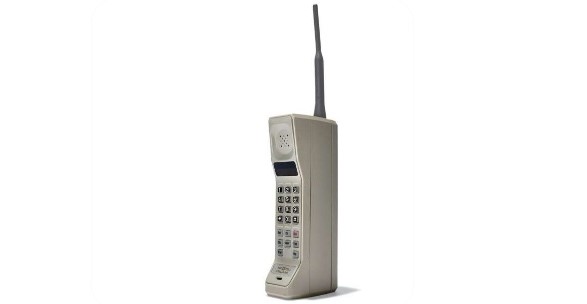Evolution of the Mobile Telecommunication Technologies or Mobile Generation (1G, 2G, 3G, 4G, 5G).
Evolution of the Mobile Telecommunication Technologies or Mobile Generation (1G, 2G, 3G, 4G, 5G)-






Hi Guys!
Today I'm here with a brand-new topic i.e, Mobile Generation. In the last post, I've mentioned the whole procedure "How the Internet works? , How Jio is giving Internet data at a very affordable price? and Why the Internet is cheapest in India".
I've tried to explain all such related questions there. Go and read, It's really interesting.
Today's topic might be a bit technical, but I'll do my best to make it easy for you.
Without wasting much time Let's get started!
We all know, Mobile is a portable device. Basically, it used to make and receive calls over a radio wave transmission technology. You've often seen towers in your location, that is also known as a mobile cell tower, in short, cell. There is a group of such cells that are interconnected with each other via optical fiber cables which provide radio coverage over a large geographical area. This enables mobile devices to communicate over that network.
Earlier, the mobile system was not that much advance to make smooth communications. The problems were like frequent call drops, non-reachable coverage, overloading, can't talk for a longer time, etc. these problems are still in today's mobile technology but it is very much improved.
In the last two decades, there is a tremendous change in the mobile industry.
Let's talk about the evolution of the mobile generation...
1G (Ist Generation) Mobile System-
Ist Generation was introduced in the late 1970s. It has only a voice call facility for communication. They were based on the Analog radio signals and used radio transmission towers for communication. But it has some major limitations such as poor network signals, call drops, and no security. The voice was not encrypted, it can be tracked by the middle man.
2G (2nd Generation) Mobile System-
It was raised in the beginning of 1990. This technology was based on digital radio signals. Before 2G, the voice was only the way for communication. It was the first time when we were going to use data for communication, in short, we can say mobile internet that enabled us to send/receive E-mails, SMS, Short messages. The major benefit of 2G was that both voice and data were digitally encrypted. Although, the Data rate (Internet Speed) was very poor approx 64 ~ 300 kbps. This generation works on network frequency bands such as GSM, GPRS, and EDGE. Later on MMS (Multimedia Messaging Sevice) was came in the picture, which was a boom in the 2G mobile industry.

3G (3rd Generation) Mobile System-
3G was the revolution in the telecommunication industry, which emerged in 2001. Actually, 3G was an advanced version of 2G. It enabled users to share multimedia to a greater extent including high-quality images, videos, audios, graphics, and various formats of files and documents. The idea of video streaming and video conferencing through mobile phones has become reality after 3G. The data rate (Internet Speed) was actually very much enhanced as compared to 2G ( 1 ~ 3 Mbps depending upon network coverage). Phone calls and internet surfing became smooth. It operates over the UMTS frequency band. The network Bandwidth or simply network frequency was also enhanced.

Now, moving towards the current Mobile Generation i.e, 4G.
4G (4th Generation) Mobile System-
The 4G introduced in 2010, was the major transformation in the field of mobile and Internet technology.
It was launched in India in 2012 by the Airtel through Mobile broadband modem also know as dongles.
It is based on packet switching technology and able to support the faster transmission of data than any network. The speed varies from 50 ~ 100 Mbps depending on network coverage and range in your area. This is the current mobile generation which we are using. It uses the LTE band for communication. Later on, the support of VoLTE was also introduced by the Reliance Jio in 2016. With the evolution of 4G, we can now expect High- Definition Video streaming, High-end online Gaming, HD video calling, cloud gaming, Remote controlling of various gadgets, etc.

5G (5th Generation) Mobile System-
The 5G upcoming mobile technology is yet to come. It is expected in 2025 in India, while in some European countries and USA, it is introduced in a few developed cities only for testing and research purpose. The experts are saying the Internet speed of 5G will be around 1Gbps.

I think this isn't the right place to talk about 5G.
I'll make a dedicated blog on 5G.
Please wait for the new blog. I'll assure you that, the upcoming blog will be amazing and you'll get some good and interesting facts about 5G technology from there.
The above-mentioned facts about 4G are only a matter of saying. We're not getting True 4G yet. The network coverage is not good enough, especially inside the home. I think The ISPs are making fool of us. Actually, the network bandwidth we're getting is sometimes lower than 3G. I think if 5G would come, then the same situation will happen as in the case of 4G in India. Just it will get the name tag of 5G.
What do you think? Mention in the comments below...
Stay Tuned with TechStoic!
Wishes and Regards
Author- Aman Tiwari
Follow us on - Social Links


This comment has been removed by the author.
ReplyDelete👍
ReplyDeleteNice and good job
ReplyDeleteThanks👍
Delete